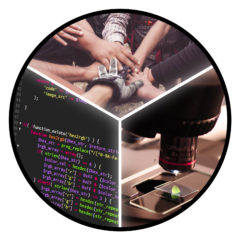Just had a conversation with fellow PhD student about writing experimental design, or Methods section. Top-down principle suggest starting with very broad strokes and go down by refining each item. In our case it looks something like that.
Draft 1:
- Mount fish
- Image fish
- Present stimuli
- Process data
- Analyze data
Let’s assume, we’ve decided that is enough writing for the day. But tomorrow we can come back and have energy to work on one of these item. For example, numbers (2) and (3). Our Methods section is turned now into:
Draft 2:
- Mount fish
- Image fish
- Prepare microscope: select filters, laser lines
- Set up imaging parameters: Z resolution, XY resolution, temporal resolution, scanned Z extent, temporal extent
- Present stimuli
- Add projector to the microscope
- Program projector to present images to the fish
- Set up parameters: intensity, time delay, randomization seed etc
- Present visual stimuli A, B, C
- Control for intensity
- Control for spatial location of stimuli
- Process data
- Analyze data
This allows us to work on part of the bigger work, instead of trying to write whole section at once. It also allows making small notes on what should be there, so it is easier to remember and fill-in the details later.
Draft 3
- Mount fish
- Image fish
- Prepare microscope: select filters, laser lines
- Set up imaging parameters: Z resolution, XY resolution, temporal resolution, scanned Z extent, temporal extent
- Z resolution: 5um for single-cell resolution, 0.5um for sub-cellular imaging [reference; reference]
- Camera pixel size is 6.25um, so if we use 110mm tube lens we have 32X magnification with 20X Olympus objective (default tube lens is 180mm) [reference]. Pixel size then 6.25um / 32x = 0.19um = 190nm
- Temporal resolution for nuclear GCaMP is ~5sec [reference]
- Present stimuli
- Add projector to the microscope
- Program projector to present images to the fish
- Set up parameters: intensity, time delay, randomization seed etc
- Present visual stimuli A, B, C
- Control for intensity
- Control for spatial location of stimuli
- Process data
- Analyze data
